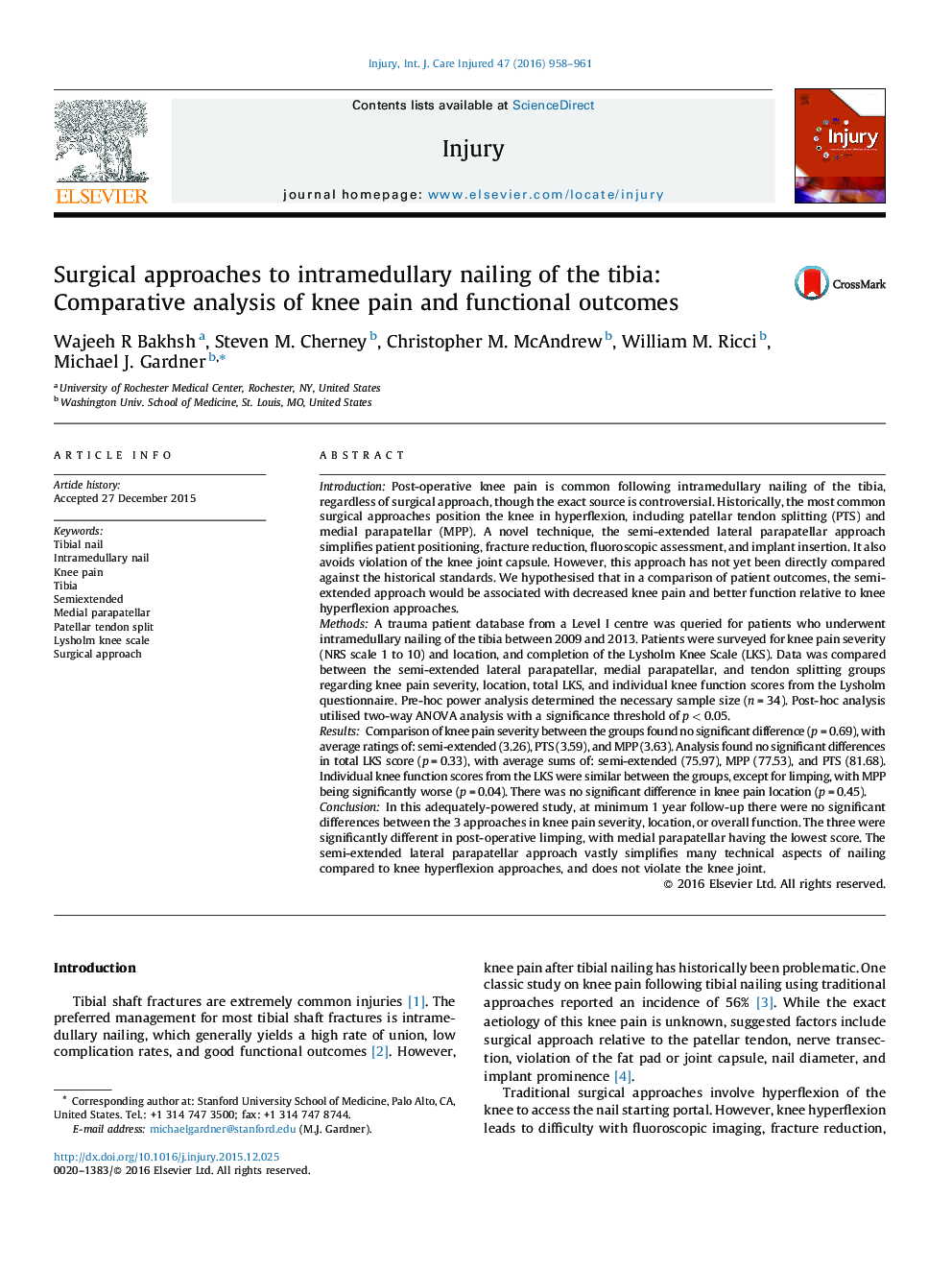| کد مقاله | کد نشریه | سال انتشار | مقاله انگلیسی | نسخه تمام متن |
|---|---|---|---|---|
| 3238965 | 1205977 | 2016 | 4 صفحه PDF | دانلود رایگان |
IntroductionPost-operative knee pain is common following intramedullary nailing of the tibia, regardless of surgical approach, though the exact source is controversial. Historically, the most common surgical approaches position the knee in hyperflexion, including patellar tendon splitting (PTS) and medial parapatellar (MPP). A novel technique, the semi-extended lateral parapatellar approach simplifies patient positioning, fracture reduction, fluoroscopic assessment, and implant insertion. It also avoids violation of the knee joint capsule. However, this approach has not yet been directly compared against the historical standards. We hypothesised that in a comparison of patient outcomes, the semi-extended approach would be associated with decreased knee pain and better function relative to knee hyperflexion approaches.MethodsA trauma patient database from a Level I centre was queried for patients who underwent intramedullary nailing of the tibia between 2009 and 2013. Patients were surveyed for knee pain severity (NRS scale 1 to 10) and location, and completion of the Lysholm Knee Scale (LKS). Data was compared between the semi-extended lateral parapatellar, medial parapatellar, and tendon splitting groups regarding knee pain severity, location, total LKS, and individual knee function scores from the Lysholm questionnaire. Pre-hoc power analysis determined the necessary sample size (n = 34). Post-hoc analysis utilised two-way ANOVA analysis with a significance threshold of p < 0.05.ResultsComparison of knee pain severity between the groups found no significant difference (p = 0.69), with average ratings of: semi-extended (3.26), PTS (3.59), and MPP (3.63). Analysis found no significant differences in total LKS score (p = 0.33), with average sums of: semi-extended (75.97), MPP (77.53), and PTS (81.68). Individual knee function scores from the LKS were similar between the groups, except for limping, with MPP being significantly worse (p = 0.04). There was no significant difference in knee pain location (p = 0.45).ConclusionIn this adequately-powered study, at minimum 1 year follow-up there were no significant differences between the 3 approaches in knee pain severity, location, or overall function. The three were significantly different in post-operative limping, with medial parapatellar having the lowest score. The semi-extended lateral parapatellar approach vastly simplifies many technical aspects of nailing compared to knee hyperflexion approaches, and does not violate the knee joint.
Journal: Injury - Volume 47, Issue 4, April 2016, Pages 958–961
